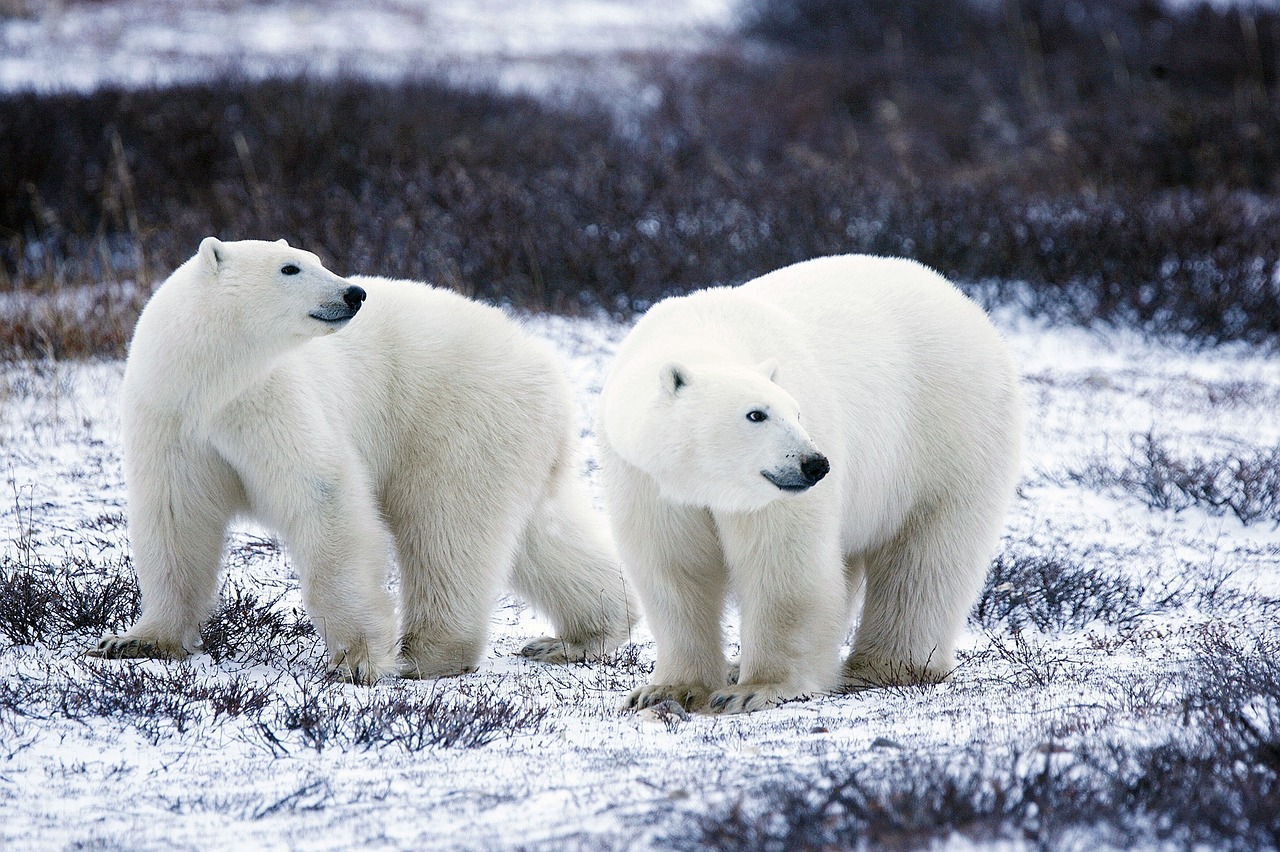
One of the most immediate effects of Global Warming is its negative impact on life in the poles. Carnivores, particularly polar bears, are going hungry because of global warming.
The impacts of global warming in polar bears have recently become more visible for the general public, partly thanks to the video of a bear who appeared to be struggling to stay alive, recorded by Christina Mittermeier and Paul Nicklen who are members of Sea Legacy, a nonprofit group concerned with creating “healthy and abundant oceans, for us and for the planet.” The video soon became viral. It prompted many people to question what scientists actually know or do not know about the real impact of global warming on the poles.
The sad news is that it is believed that the polar bear on the video is most likely dead by now. And while it is not possible to know the reasons by that polar bear looked so sickly and is now probably dead, scientists have been putting forward their ideas of how global warming may be directly impacting polar bears.
Melting Sea Ice
The main problem affecting polar bears is the rate at which sea ice is melting. This is actually more important than previously thought because a new study published on Science is now showing that carnivores like polar bears need to eat a lot more than it was previously thought, even as much as 60 percent more. Polar bears and other big carnivores that consume large amounts of energy burn as much as 12,325 calories every single day. The reason why scientists did not realize that polar bears burn so many calories in a deadly basis is that they spend most days every day just sitting around.
The study published in Science is the result of more than 2 years of solid research. The scientists involved found out that “high energy demands required consumption of high-fat prey, such as seals, which are easy to come by on sea ice but nearly unavailable in ice-free conditions. Thus, as sea ice becomes increasingly short-lived annually, polar bears are likely to experience increasingly stressful conditions and higher mortality rates.”
But, how does the increased melting of sea ice affect the calorie intake of polar bears? Polar bears obtain most of the calories they need to survive by eating seals. It has been observed that polar bears tend to sit still by the small breathing holes on the ice that seals use. A polar bear will sit patiently, sometimes for hours at the time, until a seal comes up for air, at which time the bear will try to capture it. The way wild bears do that is by standing on their hind legs and smack the seal with is two paws to then bite the seal’s neck and drag it through the ice until it dies.
Polar Bears Are Getting Hungrier
It has been estimated that every decade the sea ice shrinks by about 14 percent due to global warming. The area of sea ice that has disappeared between 1981 and 2010 is about 770,00 square miles.
Recently, it has been observed that the sea ice begins to bring earlier every year but also forming later. So, every time Spring rolls around the sea ice begin to break up sooner and when fall happens, ice forms later than it used to.
In the grand scheme of things, polar bears are the least of our problems when it comes to climate change. – Emily Calandrelli
The way this affects polar bears is twofold. On the one hand, polar bears are forced to walk and swim much longer distance in order to find what little sea ice it remains, which increases the already large number of calories that they burn. But, also, on the other hand, many polar bears are forced to stay on land for longer periods of time, as summers (or the difference between late spring and late fall) become longer. During such times as bears are on land and away from the ice, they simply fast or live off the seal fat from the previous spring.
The study published by Science took place in the Beaufort Sea which is just off the coast of Alaska. In order to observe the bears, scientists placed GPS-enabled collars around their necks. These collars also had video cameras, so researchers could obtain valuable POV (point of view) footage of the bears going about the daily lives and, more importantly, their hunting and eating habits. But the footage was not the only evidence these researchers gathered and used in their study. Apart from it, they also took urine and blood samples from these bears, which were all female and nine in total. Once these bears were re-released to the wild, scientists waited for 11 days until they captured them again, at which time new samples where taken and the video footage was downloaded so that researchers could examine it.
Thanks to the footage obtained, the team of scientists found out that the bears burned more than 12,000 calories per day even those that they rested from 65 percent of the time. That means that polar bears only tend to be active for as little as 35 percent of the time. This sheds light on the survival of polar bears because the previous studies that had been undertaking in the North Pole estimated that the number of calories that these wild bears burn through a day was about 60 percent less than this new study has now shown.
In the 11 days that the bears were back in the wild, four of them were not able to hunt any seals at all. The polar bears who went hungry in that period lost as much as 44 pounds in weight. This new study shows the effects of global warming on polar bears like no other study before it did.









